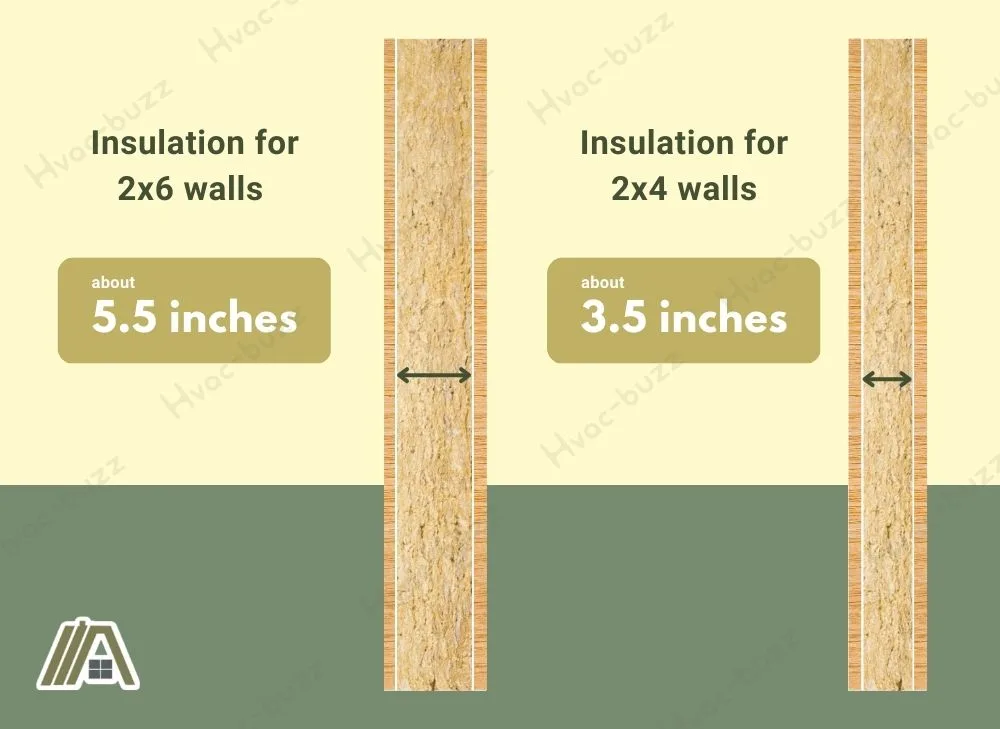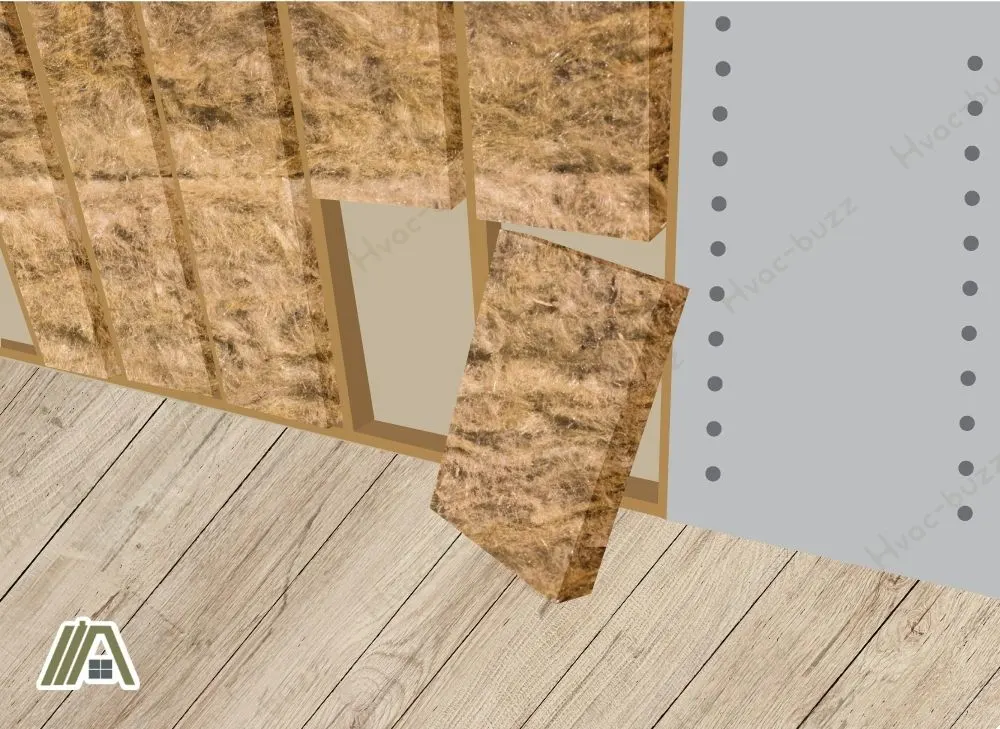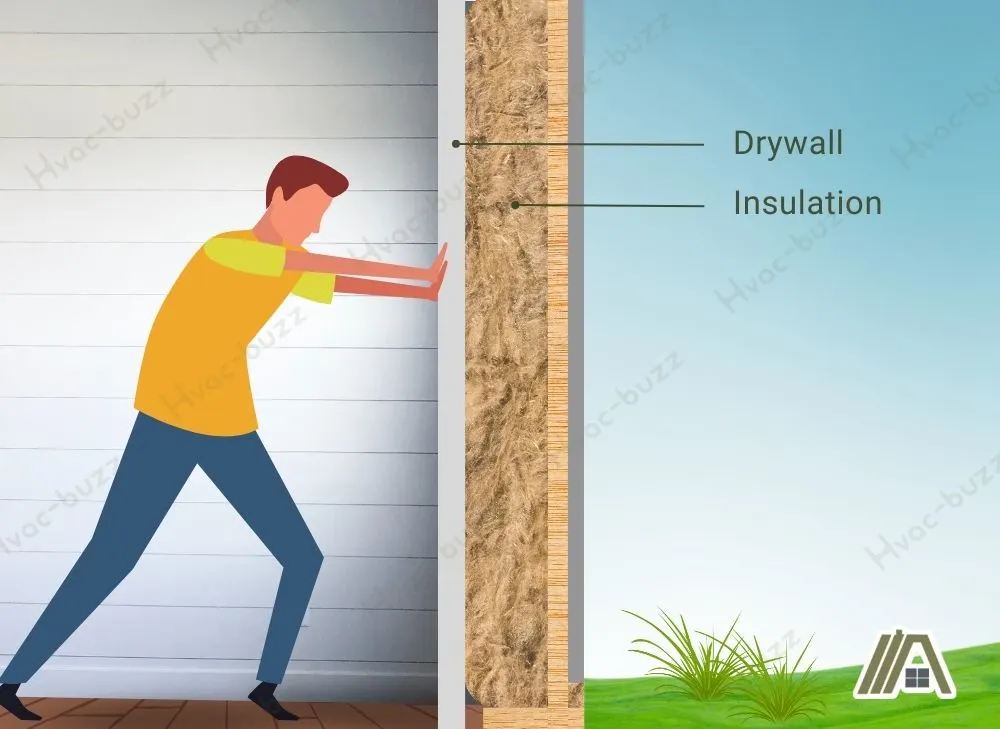It’s an easy mistake to order the wrong thickness of insulation if you’re not careful. It’s also tempting to get the thicker insulation thinking that it will offer better thermal protection.
If you bought 2×6 insulation for your 2×4 walls, there are certain scenarios in which it is still usable. However, not using the proper materials during construction is always a risky choice.

It’s a bad idea to use 2×6 insulation in 2×4 walls because it is more expensive, will introduce stress to the walls, and will perform significantly worse than the 2×4 insulation as a result of compression.
Differences Between 2×6 and 2×4 Insulation
There are some key differences between 2×6 and 2×4 insulation, and you must be aware of these differences in order to understand how using 2×6 insulation in smaller walls may impact your home.
The most obvious difference is thickness; insulation for 2×6 walls measures about 5.5 inches, while insulation for 2×4 walls measures about 3.5 inches.

They are a half-inch thinner than the walls they are meant to go in to ensure that they will fit inside the wall without getting in the way of studs or other building materials.
The second difference between the two types of insulation is R-value. R-value refers to how well a material insulates your home. A thicker piece of the same insulating material will have a higher R-value.
For products such as fiberglass and wool batts, 2×4 walls can hold R-13 and R-15 batts. 2×6 walls can hold R-19 or R-21 products.
6 Reasons Not to Use 2×6 Insulation in 2×4 Walls
1. 2×6 Insulation Costs More
The first reason not to use 2×6 insulation in 2×4 walls is the cost difference. 2×4 insulation is thinner and, therefore, cheaper as well. So, why try to use a more expensive material when the proper one is lower in cost?
For fiberglass insulation, the 2×4 varieties could be anywhere from $0.10 to $0.30 cheaper per square foot. This cost quickly adds up if you are installing insulation in larger areas.
If you mistakenly bought the wrong thickness of insulation, do not open it. Exchange it for the correct size. You’ll now be working with the ideal building materials, and you’ll probably have some extra money left over as well!
2. Installation Will Be More Difficult
Installing insulation isn’t the easiest job to begin with, and using insulation that is too large will make it far more difficult.
2×4 walls have a depth of about 3.5 inches. However, insulation designed for 2×6 walls is about 5.5 inches thick, so you’ll have about two extra inches of insulation to deal with.
The insulation will stick out farther than the studs in your wall. It will be hard to cover up the insulation with drywall after it is installed. Doing so will require you to use additional force to press the insulation down to the appropriate size.

3. Board Insulation Will Not Fit
Some insulation, such as varieties made of fiberglass, can be compressed to fit in smaller areas. Others, such as board insulation, will not.
Foam board insulation is great, especially for those not familiar with installing insulation. It has a higher R-value compared to fiberglass insulation, it’s moisture resistant, and it is easily installed.
However, the rigidity that makes foam boards so easy to install will cause you problems if you purchase the wrong size.
Foam board insulation has a set width and cannot be compressed without causing serious damage to the product. In this case, there’s no debate that the 2×6 insulation will not fit in your walls.
If you ordered 2×6 foam board insulation, there is, unfortunately, nothing you can do to make it properly fit in your 2×4 walls. You will need to get a new shipment of product.
You cannot and probably would not want to leave it exposed.
4. Compression Impairs Insulation Function
The way the compressible insulation types function is by trapping air within the material. The trapped air cannot pass through, carrying heat with it. In addition, air is a terrible conductor of heat, so the trapped air then blocks conductive heat transfer as well.
Compression impacts how well insulation performs.
When 2×6 insulation is used in 2×4 walls, the insulation becomes compressed, and the R-value decreases.
The compressed insulation is less likely to properly fill the wall cavities. It may leave gaps, which negatively affect the insulating power of your product.
So, even if the 2×6 insulation has a higher R-value to start, it might actually be less effective than 2×4 insulation when installed in too small of an area.
The higher initial cost of the 2×6 insulation isn’t the only additional expense; if your home is not properly insulated, you will be spending more money in order to keep it heated at the same temperature due to heat escaping through the walls.
5. The Insulation Can Push Against the Framing/Drywall
Insulation that is too large for the area it is installed in can push against the framing of your house. It is never a good idea to introduce more stress to your house than necessary.
Sleeping in a Room With Exposed Insulation | Is It Dangerous?
After the insulation is installed and drywall is put on top of it, the compressed insulation will continue to press against the drywall and the studs in your house. If stress is continually applied to wood and drywall, the material could eventually break.

The insulation most likely will not apply enough pressure to make anything break on its own. However, the prolonged stress can make any other sudden stressor more dangerous.
6. The Installation May Not Be Approved
Construction projects need to meet international and local guidelines for safety reasons. Properly installed insulation not only saves you money on heating and cooling, but also keeps you safe from potentially dangerous temperatures during cold and warm months.
The International Residential Code doesn’t expressly say that 2×6 insulation cannot be used in 2×4 walls. However, all construction projects must be done to a satisfactory level of quality in order to be approved by home inspectors.
An inspector may see 2×6 insulation stuffed into the 2×4 wall and say it needs to be redone. The work may fail inspection if the inspector can see visible gaps in the insulation, or if the insulation extends past the wall studs.
Having to completely tear out the old work and replace it with new 2×4 insulation is a drain on time, resources, and money. If you plan to use 2×6 insulation in 2×4 walls, test a small area to ensure that it fits properly before installing it everywhere.
Loft/Attic Insulation in Walls | 3 Reasons Why It’s a Bad Idea
Sources
https://www.homedepot.com/b/Building-Materials-Insulation/2×6-Wall/N-5yc1vZasbsZ1z1bkcb
https://www1.eere.energy.gov/buildings/publications/pdfs/building_america/26451.pdf
